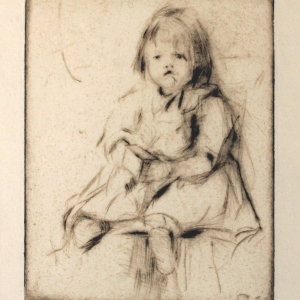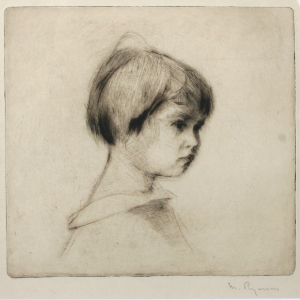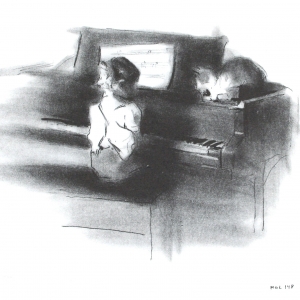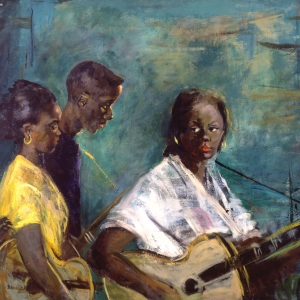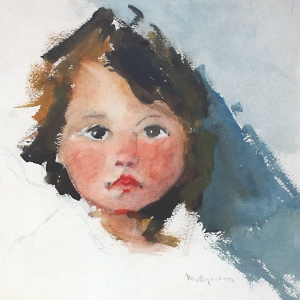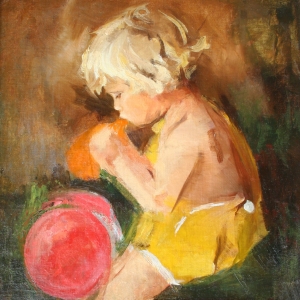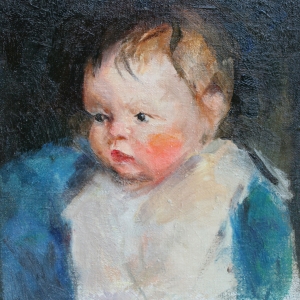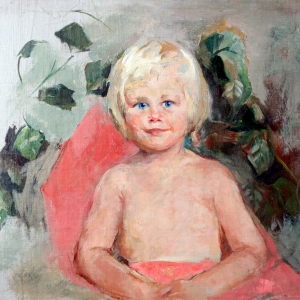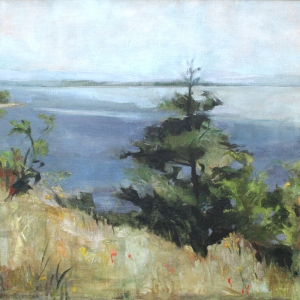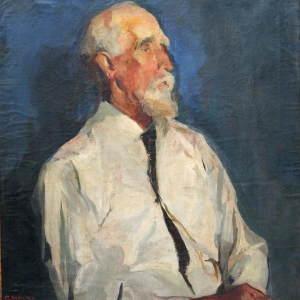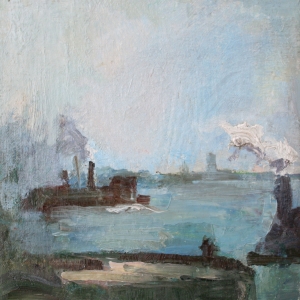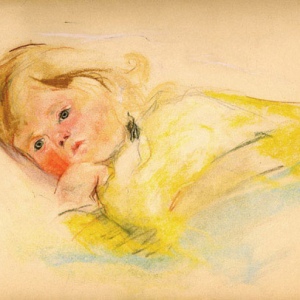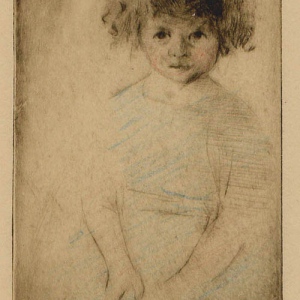Born in Morristown, New Jersey in 1886, Margery Ryerson received her Bachelor of Fine Arts degree in English from Vassar College in 1909. She continued her studies as a pupil of Charles Hawthorne at the Cape School of Art in Provincetown MA and with Robert Henri at the Art Students League in New York.
Noted for her portraits of children, Ryerson also excelled as an oil painter. For a twenty-year period (c.1920-40) Miss Ryerson taught art in New York settlement houses in exchange for the privilege of painting and drawing the children in their care. It was during this period that the artist created what many scholars regard as her greatest achievement, a series of paintings and fine prints depicting children of the underclass and immigrants with such respect and sensitivity that they found universal appeal and demand. The United Nations Children’s Fund has used her images on greeting cards and stamps. Associated American Artists NYC published a series of her etchings and lithographs. Many regard her images of children at play, in performance, and in repose, as some of the most beautiful ever created. Her etchings and lithographs were included in exhibitions worldwide, including the Paris Salon, 1921, and at the Art Institute of Chicago, 1922.
During her lifetime she was represented by Chapellier, Macbeth and Grand Central Art Galleries in New York. She also was a member of the National Academy of Design.
In 1923 her book on the teachings of Henri, The Art Spirit, was published by Lippincott Company of Philadelphia and has been in continuous publication since. In 1984 she was included in an exhibit at the Newark Museum entitled The Eight and Their Influence and in 1990 her work was presented along with Henri’s in a show entitled Henri and Ryerson, the Art Spirit at the Grand Central Art Galleries.
In 2008 a selection of the artist’s work was shown at the Provincetown Artists’ Association and Museum (PAAM), which coincided with a major show stressing Charles Hawthorne (1872-1930) and his teaching methods. The influential book “Charles Hawthorne on Painting” is still in print and was largely compiled from Miss Ryerson’s class notes.
